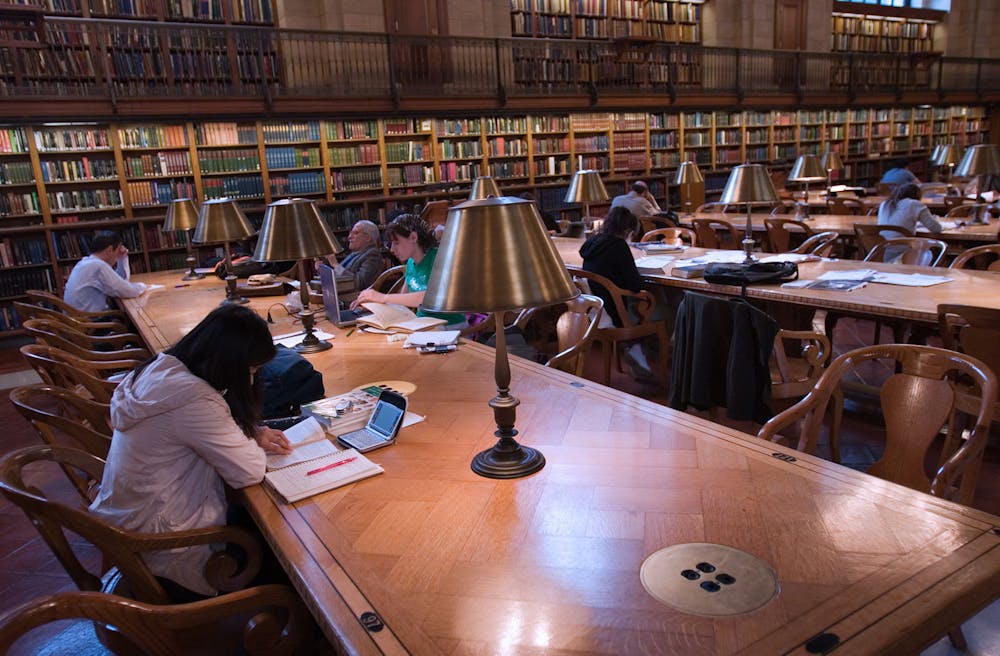
The summer before junior year of high school, I found my old library card buried under a stack of coupon clippings and junk mail. The edges were slightly bent and misshapen, and the colors had faded to a grayish blue, but it was a treasure nonetheless. The card was not only a ticket to a place of knowledge and imagination but a valuable memento of my childhood.
Growing up, I never participated in any extracurricular activities. I didn’t learn an instrument, play a sport or take extra classes or tutoring. Instead, I spent my elementary and middle school days drawing, writing, watching TV and visiting the library. My mother, who worked part time from home, was always willing to drive me to the local library and stay with me for the several hours I needed to browse the shelves.
The local library I visited most often growing up was a modest two-story building connected to a tiny campus offshoot of a larger university downtown. The layout divided sections by genre and audience — young adult fiction downstairs beyond the computers, children’s books on the other side of the floor and adult nonfiction and fiction upstairs.
I spent most of my time in the young adult fiction sections, using each visit to collect whatever books caught my eye until I accumulated a sizable stack. Carefully balancing the stack on both hands and using my chin as a stabilizer, I would head to where my mom sat reading her magazines and begin diving into the first novel on top. Next to tall, sunlit windows, I would sit in the middle of a large armchair, my feet dangling above carpeted floors, and read for hours.
Anyone who has found themselves immersed in a good book can understand the feeling of how a story can stop time. You become absorbed in the pages in front of you, arrested in the plot of the book. Your eyes can barely keep up with your desire to know what comes next. Every word is not a static section of text on paper but a flowing thought that unfolds into a story.
Libraries are some of the best places to experience this time-stopping feeling in a good book. Silence, semi-isolation from the other patrons, comfortable lighting and chairs all breed the environment necessary to allow a reader to truly immerse themselves in the work before them. Before I knew it, my mom would tap me on the shoulder, releasing me from the story’s gravitational pull to tell me it was time to go.
I loved reading, so naturally, I would love a place that not only allowed me to read but gave me free access to a vast collection of reading material. In the hours I spent at the library, I would enter worlds of fantasy and science fiction. I would come across characters with traits and features similar to my own, living stories wholly unique to them. I especially loved myths, stories encompassing different worlds with powerful characters and supernatural occurrences.
The freeness of libraries is what allowed me to visit so often and to read so many books. In some ways, without the seeming limitless access to books that encouraged me to read growing up, I would not be where I am today. Reading inspired me to write. In particular, I fell in love with creative writing, which has become a large source of passion and motivation in my life.
With the return of my old library card, which I quickly replaced and renewed, I returned to the library, studying and reading after school when I wasn’t busy with other things. Unfortunately, my renewed interest was interrupted by the pandemic, and since then, my physical in-person visits have been replaced by e-books and library apps. Even now on campus as a first-year at Hopkins, I have yet to visit any of the libraries or reading rooms, but I hope that as cases go down (eventually) and restrictions with it, visits to the library can become commonplace once again.
Aliza Li is a freshman from Houston, Texas studying Writing Seminars and Cognitive Science. Her column is an homage to all of the passions and obsessions that contribute to the person she is today.





